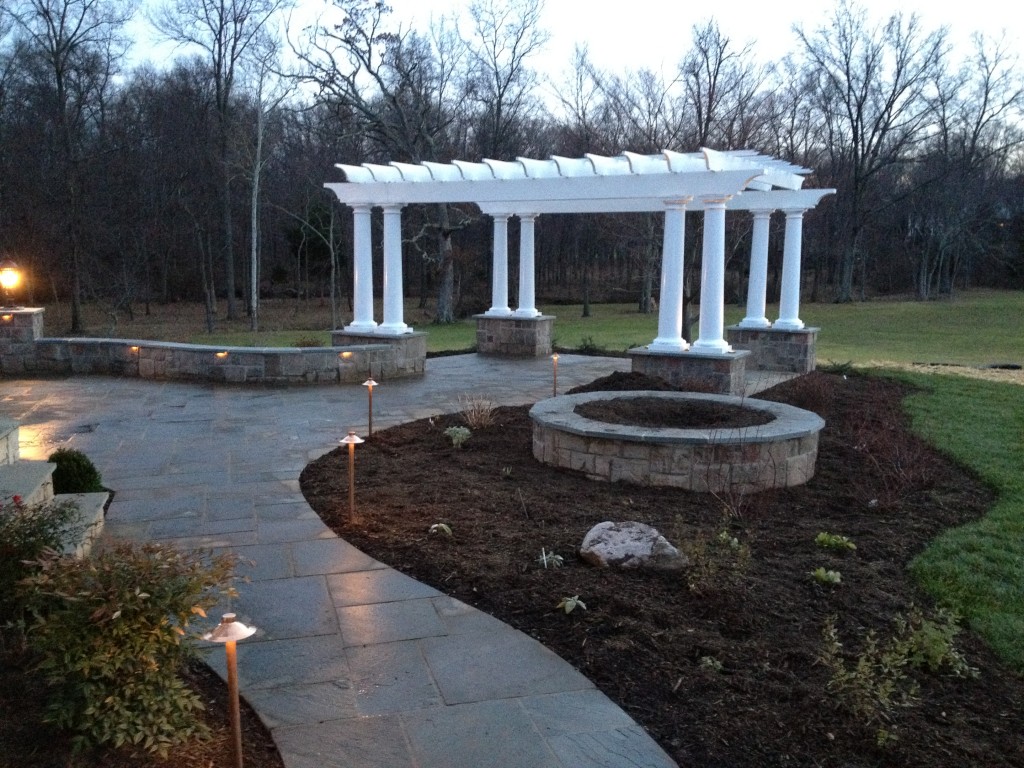Implementing a professionally designed landscape feature is one of the best things you can do to improve your home’s daytime appearance and atmosphere. And to carry over those same aesthetic benefits to the evening and nighttime, outdoor lighting is the perfect solution. However, properly illuminating your home and its landscaping features isn’t as simple as making a stop at Lowe’s or Home Depot. It’s actually quite an involved process with many variables to take into consideration. To learn all about exterior lighting, read on to our comprehensive guide.
The Benefits
There are several major benefits to outdoor lighting, aside from its aesthetics. First, it extends the timeframe in which you can enjoy your home’s outdoor space. After all, if you spend the time and money to design a landscape for your home, you don’t want to work all day and be unable to enjoy it at night.

Another benefit is safety. By keeping your landscape features well lit, you’ll prevent yourself and your guests from tripping and falling, and you’ll discourage intruders from targeting your home.
The Basics
Although there is a lot of room for customization in outdoor lighting, there are two basic rules you should always follow: Don’t go too bright It’s not hard to light a landscape too brightly and ruin its visual appeal. You want to subtly accent your home and its features, not put them under a glaring spotlight. Lighting that’s too bright will reveal unsightly details and take away from the beauty of your landscaping.
Avoid revealing the lights themselves
Outdoor lighting, with the exception of walkway lighting, should always be concealed. Allowing the light source to be completely exposed will cause unattractive, uneven lighting.
Types of Outdoor Lighting
There are several types of outdoor lighting to choose from, and each type has its own set of uses.
Moonlighting – Moonlighting looks much like it sounds – soft, dappled light cast from high above. Landscape designers usually accomplish a moonlighting effect by placing soft lights in trees and other shrouded structures.
Glazing – Glazing uses bright lights pointing upward to accentuate the interesting surfaces and textures of different objects. For example, stone and brick walls, water features, and tall boulders are all good features to accent with glazing.
Accent lighting – Accent lighting is the simplest and most direct type of lighting – shining a floodlight or focused light source directly on an object or sculpture.
Cast lighting – Cast lighting utilizes short lights to cast a gentle glow on sidewalks and walkways.
Uplighting – Similar to glazing, uplighting is executed by placing a focused light directly underneath an object, such as the canopy of a tree or a pillar, and illuminating it from below.
The Problem with Solar
When browsing through your local home improvement store, you may be tempted to just pick up a few sets of solar lights and call it a day. Unfortunately, the solar lights found in common home improvement outlets are cheaply made and begin to dim within a year or two.

The solar cells contained in these lights are very small, meaning they can’t store much power. Also, the internal mechanisms required to keep the lights working are fragile and prone to wear.
Tying it all Together
No matter the style of your home or the nature of its landscaping, there are countless combinations of lighting to accent your property. And along with increased visual appeal, you’ll be bringing added benefits of safety, home security, and increased accessibility to your home and its outdoor spaces.

